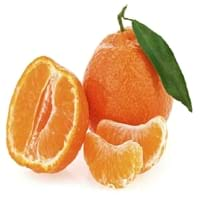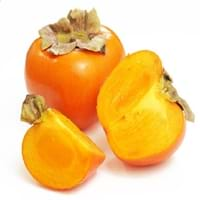Health Benefits
Cancer prevention, Heart care, Increases metabolic rate, Reduces stress
Anti-oxidant properties, Beneficial in curing fever, Cancer prevention, Heart care, Reduces nervous tension
General Benefits
Boosts immune system, Controls blood pressure, Digestive aid, Eye care, Helps in weight loss
Anti-inflammatory properties, Boosts immune system, Controls blood pressure, Digestive aid, Eye care, Fights against infections, Helps in weight loss, Improves blood circulation
Skin Benefits
Brightens and lightens complexion, Treatment of acne, Treatment of dark spots
Anti-aging benefits, Brightens and lightens complexion, Reduces wrinkles
Hair Benefits
Promotes longer and healthier hair, Protects hair
Good conditioner, Promotes longer and healthier hair, Treatment of dandruff
Allergy Symptoms
Abdominal pains, Breathing difficulty, Coughing, Diarrhea, Drop in blood pressure, Fainting, Runny nose, Skin rash, Sneezing, Swelling of mouth, tongue or lips, Vomiting
Abdominal pains, Anaphylaxis, Inflammation
Side Effects
Allergic reaction
Affects blood glucose levels, Decrease in blood sugar levels, Coagulation
Best Time to Eat
As a snack in the late afternoon, Don't consume at night and before bed, Eat the fresh ones, avoid mixing with any other foods, don't eat after meal., Morning time (before lunch)
Along with meal, As a snack in the late afternoon, Don't consume at night and before bed, Eat the fresh ones, avoid mixing with any other foods, don't eat after meal.
Vitamin B1 (Thiamin)
Not Available
Vitamin B2 (Riboflavin)
Not Available
Vitamin B3 (Niacin)
Not Available
Vitamin B5 (Pantothenic Acid)
Not Available
Vitamin B6 (Pyridoxin)
Not Available
Vitamin B9 (Folic acid)
Not Available
Vitamin C (Ascorbic Acid)
Vitamin E (Tocopherole)
Not Available
Vitamin K (Phyllochinone)
Not Available
Calories in Fresh Fruit with Peel
Not Available
Calories in Fresh Fruit without Peel
Not Available
Calories in Frozen Form
Not Available
Not Available
Calories in Dried Form
Not Available
Calories in Canned Form
Not Available
Not Available
Type
Citrus
Berry, Tree fruit
Season
Autumn
Autumn, Winter
Varieties
Clemenules or Nules and Nadorcott
Early Golden, John Rick, Miller, Woolbright and Ennis
Color
Orange
Orange, Red, Yellow
Inside Color
Orange
Yellow
Taste
Sweet, Tangy, Tart
Sweet
Origin
China
Eastern United States
Soil Type
Loam, Sandy, Well-drained
Sandy loam, Well-drained
Climatic Conditions
Warm to hot climate
Can tolerate wide range of climates, Sunny
Facts about
- Clementine was first grown at the citrus research center in USA in 1909.
- It is called as"Christmas orange" as it's limited growing season falls during winter.
- It's a hybrid between Mediterranean and Oranges.
- It is said that formation of seeds inside the persimmon fruit shows what type of winter is coming(type of snow).
- There are about 2000 varieties of this fruit.
- The American persimmon has another name 'Possumwood'.
Other Countries
Argentina, Brazil, Egypt, Italy, Japan, Morocco, Turkey, United States of America
Azerbaijan, Brazil, Costa Rica, Japan, Korea, Pakistan
Top Importer
United States of America
United States of America
Top Exporter
Spain
United States of America
Botanical Name
Citrus clementina
Diospyros virginiana
Synonym
Not Available
Not Available
Subkingdom
Tracheobionta
Tracheobionta
Division
Magnoliophyta
Magnoliophyta
Class
Magnoliopsida
Magnoliopsida
Subclass
Rosidae
Dillenhidae
Order
Sapindales
Ericales
Family
Rutaceae
Ebenaceae
Species
C. clementina
D. virginiana
Generic Group
Citrus fruit
Not Available
Compare Clementine and American Persimmon
It is important compare Clementine and American Persimmon as both the fruits have a different nutritional value. Their comparison can be done on the basis of their vitamin and mineral content, calories, benefits as well as characteristics, making it easier for us to choose the best fruit for our diet. Their general health benefits are as follows:
Clementine Benefits: boosts immune system, controls blood pressure, digestive aid, eye care and helps in weight loss.
American Persimmon Benefits: anti-inflammatory properties, boosts immune system, controls blood pressure, digestive aid, eye care, fights against infections, helps in weight loss and improves blood circulation.
Fruits are also used as a remedy for various hair problems. The hair benefits of Clementine are: promotes longer and healthier hair and protects hair and hair benefits of American Persimmon are: good conditioner, promotes longer and healthier hair and treatment of dandruff. Some fruits are known to cause allergic reactions. The allergy symptoms of first fruit are: abdominal pains, breathing difficulty, coughing, diarrhea, drop in blood pressure, fainting, runny nose, skin rash, sneezing, swelling of mouth tongue or lips and vomiting and the symptoms of second fruit are: abdominal pains, anaphylaxis and inflammation. Get sorted Clementine vs American Persimmon comparison with the help of fruit comparison tool by fruitvs.com.









